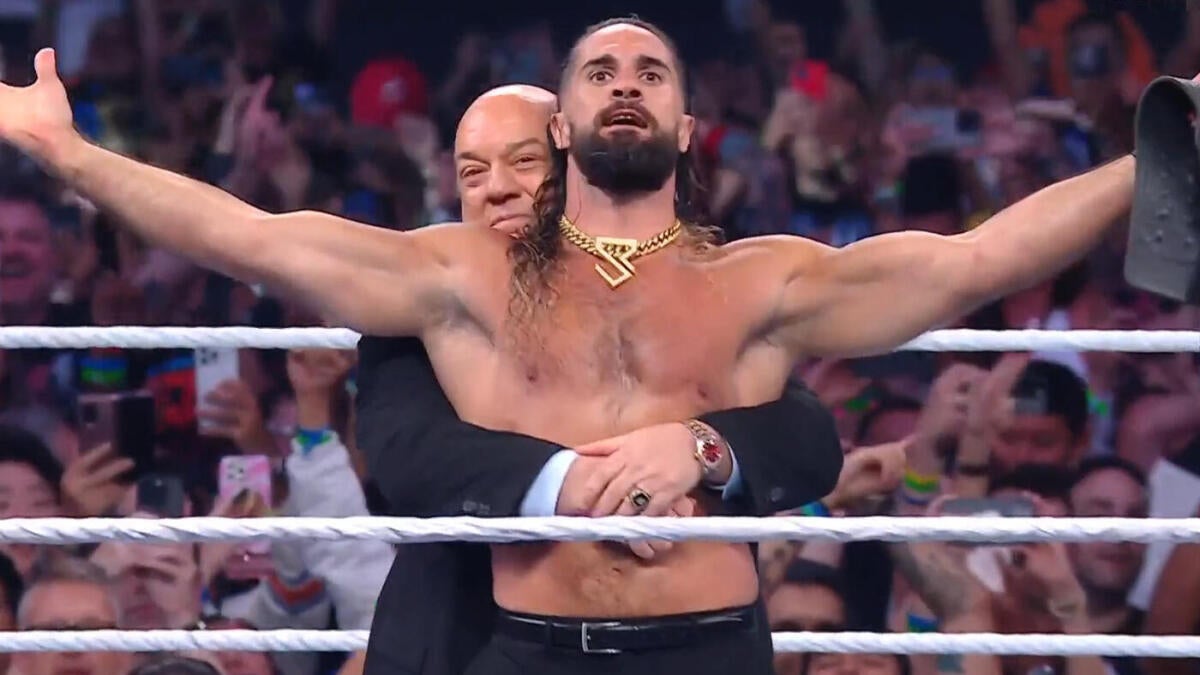The recent NHL offseason has been marked by significant roster shifts that have reshaped the league’s competitive landscape. Among the most impactful moves was the Toronto Maple Leafs’ decision to trade star winger Mitch Marner to the Vegas Golden Knights in an unprecedented sign-and-trade agreement. This transaction, coupled with Marner’s subsequent eight-year, $96 million contract extension with Vegas, has sent shockwaves through the NHL. Additionally, the Florida Panthers’ strategic re-signings of key players like Brad Marchand and Aaron Ekblad have further intensified the league’s evolving dynamics. These moves underscore the strategic dimensions and ripple effects that are redefining team compositions and competitive balance.
The Marner Trade: A Game-Changing Deal
Context and Details
Mitch Marner’s tenure with the Toronto Maple Leafs spanned nine seasons, during which he established himself as one of the NHL’s premier offensive talents. His performance in the 2024-25 season was particularly noteworthy, as he finished fifth in league points with 102 points. This impressive output solidified his status as a cornerstone of the Maple Leafs’ offensive arsenal and a fan favorite. However, his impending unrestricted free agency posed a significant challenge for the Maple Leafs, given Marner’s contract demands and the team’s salary cap considerations.
In a surprising pre-free agency move, the Maple Leafs executed a sign-and-trade with the Vegas Golden Knights. This deal involved Marner signing an eight-year extension worth $96 million, averaging $12 million annually. The Golden Knights, in turn, received Marner’s high-powered winger skillset, while the Maple Leafs acquired forward Nicolas Roy as part of the compensation package. This transaction was unprecedented in its timing and structure, as it effectively circumvented the open market and allowed both teams to achieve their respective goals.
Strategic Implications for the Maple Leafs
The Maple Leafs’ decision to trade Marner signals a strategic pivot that reflects a broader reassessment of the roster’s composition. Despite Marner’s exceptional individual performance, the team’s recurring early playoff exits have prompted a critical evaluation of their approach. By moving Marner, the Maple Leafs have freed up salary cap space and acquired a solid, albeit less heralded forward in Roy. This move potentially creates financial flexibility for future rebuilding or retooling efforts.
Moreover, this trade underscores the Maple Leafs’ unwillingness to further escalate their payroll, given Marner’s steep six-figure price tag. The financial commitment to Marner could have impaired the team’s ability to retain other core players or shore up depth positions. Ultimately, this move may indicate Toronto’s acceptance that marquee stars require complementary supporting cast enhancements to break playoff barriers. The Maple Leafs’ forthcoming moves will be closely scrutinized as the NHL landscape adjusts to this significant shift.
What Vegas Gains
For the Vegas Golden Knights, the acquisition of Mitch Marner is a bold statement of intent. By securing a player of Marner’s caliber on a lengthy contract, Vegas enhances their already formidable lineup with offensive creativity, playmaking, and scoring prowess. The contract’s duration and financial commitment emphasize Vegas’ confidence in Marner as a cornerstone asset to lead their pursuit of a Stanley Cup.
Additionally, this move alleviates the risk of losing Marner on the open market to other contenders. Vegas’ front office demonstrated a shrewd understanding of player valuation, cap management, and timing by completing the sign-and-trade ahead of free agency frenzy. The Golden Knights’ ability to secure Marner’s services without entering a bidding war highlights their strategic acumen and commitment to building a championship-caliber team.
Florida Panthers’ Moves: Stability Amidst a Shifting Market
While the Maple Leafs and Golden Knights orchestrated a headline-grabbing trade, the Florida Panthers pursued continuity by re-signing veteran forward Brad Marchand and defenseman Aaron Ekblad. Marchand’s leadership and offensive dynamism, paired with Ekblad’s reliable defensive presence, provide the Panthers with a strong foundation. These re-signings reinforce Florida’s commitment to maintaining a competitive core, likely in response to increasing parity and aggressive roster enhancements by rival teams.
The Panthers’ ability to retain these key components while maneuvering within cap constraints will be critical to their sustained success and Stanley Cup aspirations. Their strategic focus appears to be on preserving chemistry and avoiding disruption amid a tempestuous free agency period where marquee players frequently change teams. By prioritizing stability, the Panthers have positioned themselves as a formidable contender in the Eastern Conference.
Broader NHL Free Agency Landscape and Implications
Preemptive Deals and Player Movement Trends
The Marner sign-and-trade exemplifies a growing trend of front-loading negotiations before the official start of free agency to secure premier talent and avoid bidding wars. This approach highlights the increasing sophistication of NHL teams in managing asset movement, contract structures, and cap space optimization.
Other teams observing these moves may recalibrate their own strategies, potentially pursuing similar preemptive sign-and-trades or accelerating contract extension talks to steer clear of the open market’s uncertainties. This trend could lead to a more dynamic and unpredictable free agency landscape, as teams seek to gain a competitive edge by securing top talent before other franchises have the opportunity to do so.
Salary Cap Realities and Competitive Balance
Marner’s $12 million annual cap hit places him among the NHL’s highest-paid athletes, reflecting escalating player salaries and the pressures teams face in balancing superstar contracts with roster depth. This trend could deepen competitive disparities between affluent franchises and those with stricter financial constraints.
However, the win-now mentality demonstrated by Vegas and Florida suggests that investment in proven talent remains the preferred route to success, rather than prolonged rebuilding cycles. This could fuel a competitive arms race, compelling mid-market teams to innovate cap flexibility tactics or develop homegrown talent at scale. The NHL’s salary cap structure will continue to play a pivotal role in shaping team strategies and competitive balance.
Questions for the Maple Leafs’ Future
Toronto’s gamble by trading Marner introduces uncertainty over their immediate trajectory. Key questions arise about their capacity to remain contenders absent one of their top offensive players. Will the salary savings and new acquisitions sufficiently compensate? Can the Maple Leafs attract or develop complementary stars to reignite playoff success? The franchise’s forthcoming moves will be closely scrutinized as the NHL landscape adjusts.
The Maple Leafs’ decision to trade Marner may also have broader implications for the team’s long-term strategy. If the move is part of a larger plan to rebuild or retool, the Maple Leafs will need to carefully manage their roster and financial resources to ensure sustained success. The team’s ability to adapt to this significant change will be crucial in determining their future trajectory.
Fan and League Reactions
Fan responses have been mixed, with Toronto supporters mourning the departure of a beloved figure while acknowledging the need for change. Conversely, Vegas fans are energized by the acquisition of an elite forward, heightening expectations for postseason glory.
League-wide, the trade is a warning sign about a potentially volatile free agency environment, with star players again shifting allegiances and legacy teams rethinking their compositions. The NHL community now watches with keen anticipation to see how these decisions translate into on-ice success and which franchises capitalize most effectively on this transformative offseason.
Conclusion: A New Chapter for Mitch Marner and the NHL
The Mitch Marner trade to the Vegas Golden Knights, sealed by a lucrative eight-year contract, is more than an offseason transaction—it represents a strategic shift in NHL team-building philosophy and a harbinger of heightened player mobility. For the Maple Leafs, it marks the end of an era and the beginning of a challenging rebuild or retooling phase. For Vegas, it signals ambition and readiness to compete at the highest level with a star-studded roster. Meanwhile, the Florida Panthers’ decision to re-sign key players like Brad Marchand and Aaron Ekblad illustrates a contrasting approach focused on stability.
As the 2025 NHL free agency unfolds, these moves will ripple across the league, influencing contract negotiations, roster configurations, and competitive dynamics. The NHL community now watches with keen anticipation to see how these decisions translate into on-ice success and which franchises capitalize most effectively on this transformative offseason. The ramifications of this trade will likely reverberate for years, redefining player valuation, front-office strategy, and fan expectations alike. The NHL landscape is evolving, and the impact of these strategic maneuvers will shape the league’s future in profound ways.












